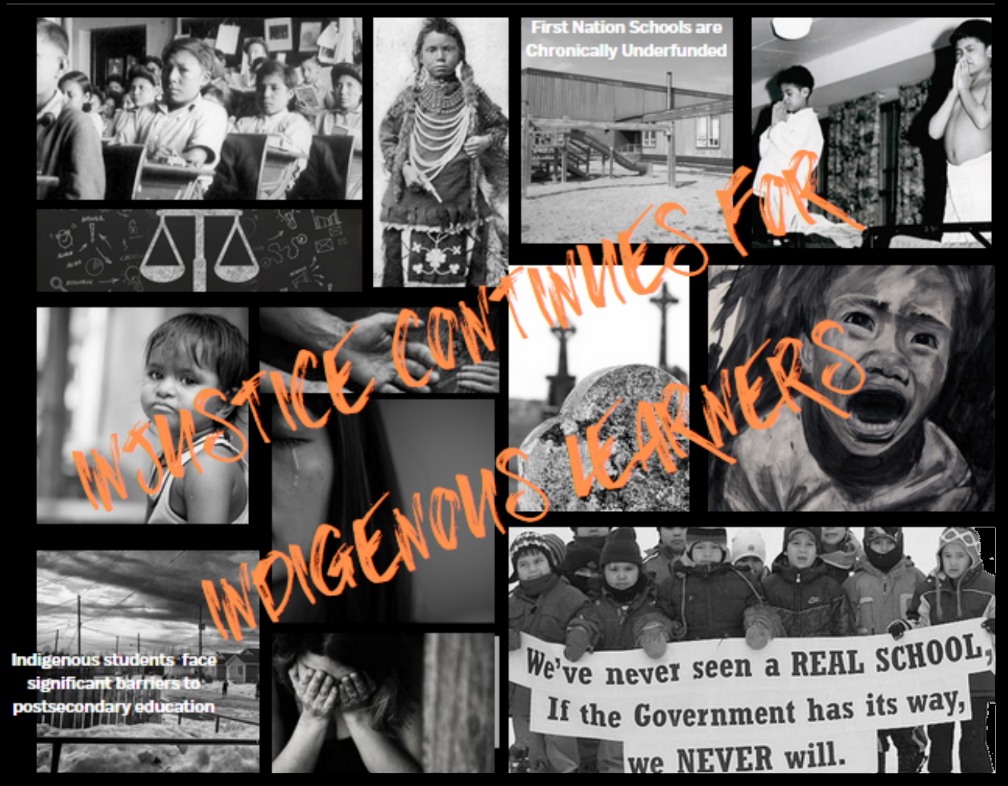11 Education for Indigenous Students

By Angela J. Stoneman
I was appalled when reading about the conditions under which Indigenous children are still learning. The content triggered an emotional response that compelled me to focus on this issue for my collage.
The International Declaration of Human Rights states “everyone has the right to education” (Article 26). The Canadian government continues to fail to provide Indigenous children with an adequate education. First Nations students continue to perform below national and international standards (Campbell, 2021). The federal government is responsible for funding schools on First Nation reserves and continues to provide less to First Nations schools than provincial schools receive from their respective governments (Neilson and Madden, 2020). The disparity averages $4000 per student (Neilson and Madden, 2020).
Many schools on reservations also lack a consistent source of water and contend with black mould and rodent problems (City News, 2021). Learning by Indigenous students is also impeded by the lack of books, gyms, and lab equipment. These conditions and disproportion in funding conflict with the government’s commitment to reconciliation with mutual respect and equity moving forward (Campbell, 2021).
Mel Ainscow’s suggestion to replace the term inclusion with “every learner matters, and matters equally”(Unesco, 2022, p. 11) emphasizes that Indigenous learners in Canada are not receiving an inclusive education. Indicated by the underfunding and barriers they face to succeed and move forward into higher education, our government has work to do to ensure these learners receive the resources required to close the achievement gap. Apologies for past injustices Indigenous children endured in residential schools are not enough. The government must ensure that all children in Canada may learn in clean, warm, and safe schools with the necessary resources to excel.
References
Campbell, C. (2021). Educational equity in Canada: the case of Ontario’s strategies and actions to advance excellence and equity for students. School Leadership & Management, 41(4-5), 409-428. DOI: 10.1080/13632434.2019.1709165
City News. (2021, June 1). Canada’s Indigenous education funding gap [Video]. YouTube. https://www.youtube.com/watch?v=RQwJZ7aIma0
Neilson, M. & Madden, B. (2020, August 19). Leaning in/leaning out with Spirit Bear: A framework for place-based truth and reconciliation education. Education Canada Magazine. https://www.edcan.ca/articles/leaning-in-leaning-out-with-spirit-bear/
UNESCO (2022). The right to education in the 21st century: Findings from the international seminar on the evolving right to education. UNESCO Digital Library. https://unesdoc.unesco.org/ark:/48223/pf0000381108
United Nations (1948, December 10). Universal Declaration of Human Rights. https://www.un.org/en/about-us

